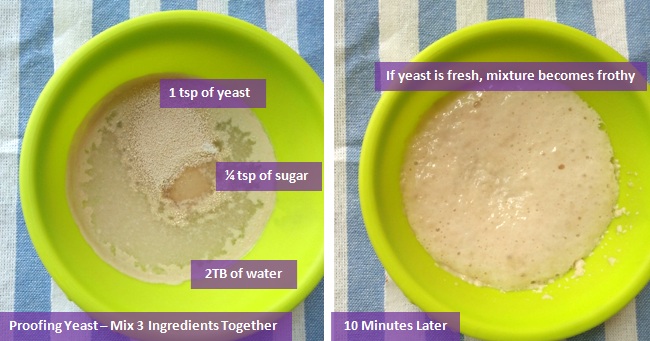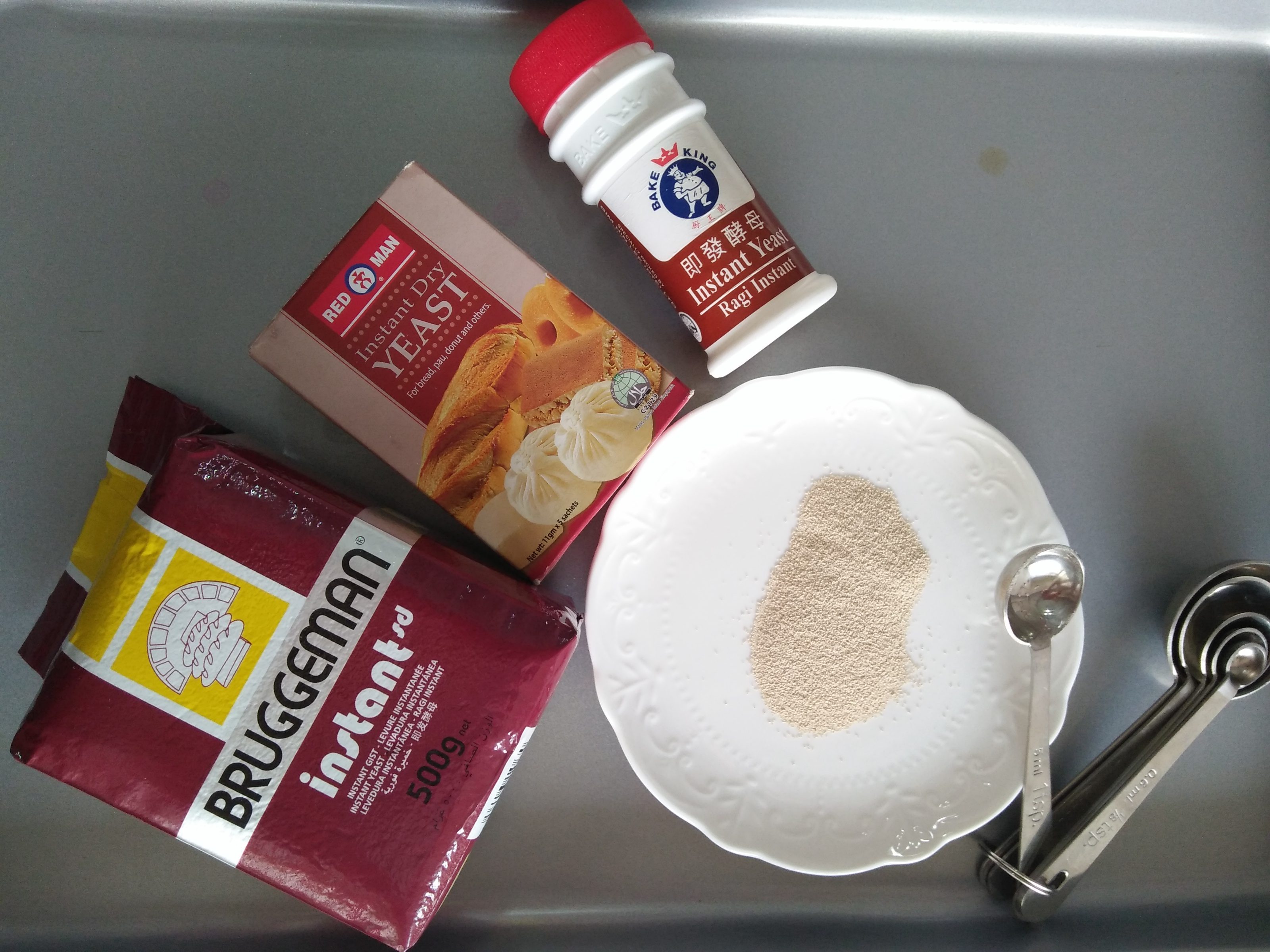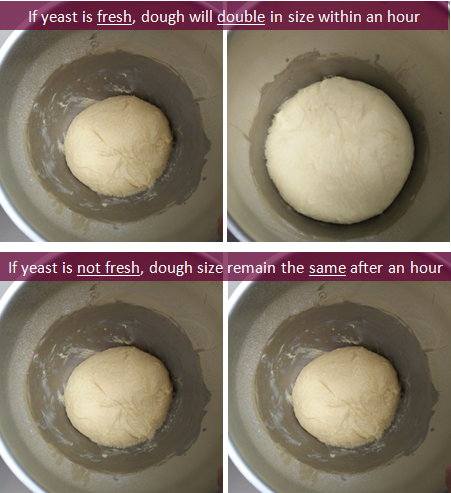In this blog, I will discuss about what is yeast and how to proof yeast. You will find the following information useful if you are new to bread making or unsure why your dough does not proof when preparing your own bread at home. May be heavy reading here but understanding yeast is fundamental of bread making. Please bare with me. You will find it worth learning about yeast and proofing yeast.
 What Is Yeast?
What Is Yeast?
“Yeast is a microscopic single-cell organism present in the air. When added to flour and water, it feeds on the sugar in the flour’s carbohydrates. In the process, the yeast multiplies and grows, producing alcohol, which flavours the dough, and carbon dioxide, which is held by the gluten network of the dough and creates the structure of the bread,” Rose Levy Beranbaum, author of The Bread Bible.
Beautifully explained by Rose! Come to think of it, yeast is quite a useful and magical organism. A type of fungi which we come close in contact.
Without the discovery and technological advances of producing yeast, we are no close to producing homemade bread or even smelling freshly homemade bread from our own kitchen. If types of yeast have been confusing you, I can understand. In Singapore, there are many brands sold in the market such as Redman, Bake King, Bruggeman and saf-instant. These brands are commonly found in local supermarkets such as NTUC, Cold Storage or bakery supply store like Phoon Huat.
 The listed yeasts have one thing in common. They are all instant yeast which can be added directly to dry ingredients during bread making. As the name indicated instant, it does not require proofing because it needs only a little water for yeast’s action to take place. Conversely, dry action yeast requires proofing.
The listed yeasts have one thing in common. They are all instant yeast which can be added directly to dry ingredients during bread making. As the name indicated instant, it does not require proofing because it needs only a little water for yeast’s action to take place. Conversely, dry action yeast requires proofing.
What is Proofing Yeast?
There are two reasons for proofing yeast. Firstly, dry action yeast requires sufficient amount of water for it to work. This means it can’t be added as a dry ingredient in the recipe. Instead, it is added with some water and sugar from the recipe, wait for 10 minutes or until it turns frothy and added as a wet ingredient in the recipe. Secondly, you can proof your yeast if you are unsure whether your yeast is being stored properly (which affects the freshness). Yeast that is not fresh will not rise your bread. Hence, even if you have instant yeast but you are doubtful about its capability, then do a test by proofing it.
How to Proof Yeast?
 Simply mix some yeast, sugar and room temperature water and wait for 10 minutes. If yeast is fresh, the mixture will become frothy or bubbly. If it is not, it means that the yeast is inactive.
Simply mix some yeast, sugar and room temperature water and wait for 10 minutes. If yeast is fresh, the mixture will become frothy or bubbly. If it is not, it means that the yeast is inactive.
How to Ensure Yeast Stay Fresh?
If you would like to your yeast to work for you, be sure to be ‘nice’ by ensuring proper storage. It is fine to store yeast in room temperature before opening. However, you need to ensure it is away from heat, e.g. away from a hot pot of boiling water.
On the other hand, you need to store your yeast in the fridge in an airtight container after opening. This will ensure yeast stay fresh for months.
It is also fine to freeze your yeast but I do not find it necessary to do so as it is sufficient to simply chill it.
Do not use yeast that has passed expiry date. It’s just a little extra cost to get new yeast and produce fresh homemade bread. It is worth the try!

What Happens if Yeast is Not Fresh?
If you did not see frothy mixture after testing it, simply discard it. Never use inactive yeast in bread making as it will not proof the dough. The dough will not double in size during initial proofing (fermentation) stage. Hence, you would rather waste only small portion of yeast than all other ingredients altogether.
Do you have bad experience with yeast? Or do you have special tips when working with yeast? Share with us so that it is beneficial for all….
Thank you for reading.


 What Is Yeast?
What Is Yeast?